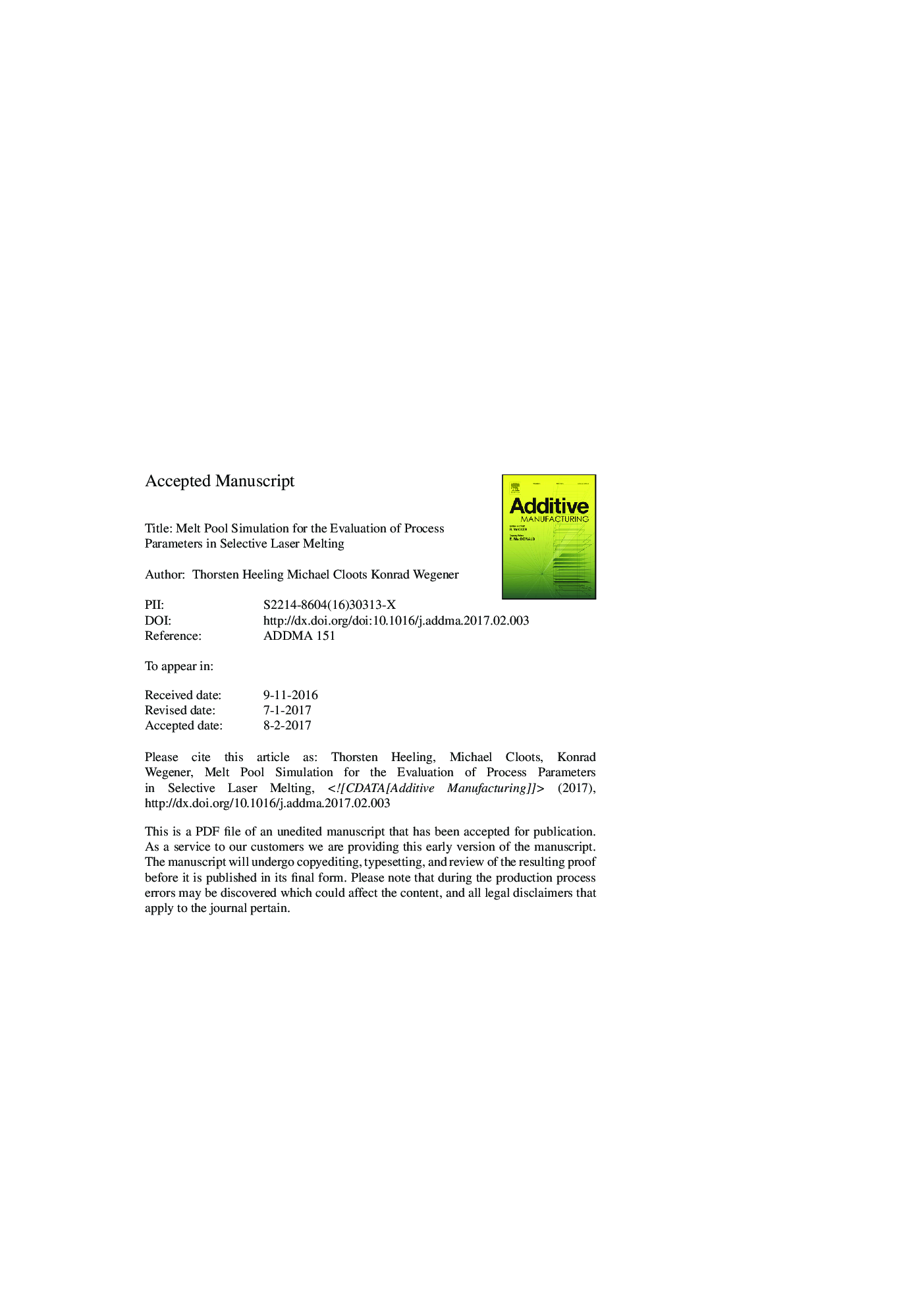| Article ID | Journal | Published Year | Pages | File Type |
|---|---|---|---|---|
| 5020089 | Additive Manufacturing | 2017 | 36 Pages |
Abstract
With increasing industrial interest and significance of the selective laser melting the importance for profound process knowledge increases so that new materials can be qualified faster. Also it is the basis for an educated evaluation of possible process innovations. Therefore a 3D numerical model for the selective laser melting process is presented that allows a detailed look into the process dynamics at comparably low calculation effort. It combines a finite difference method with a combined level set volume of fluid method for the simulation of the process and starts with a homogenized powder bed in its initial configuration. The model uses a comprehensive representation of various physical effects like dynamic laser power absorption, buoyancy effect, Marangoni effect, capillary effect, evaporation, recoil pressure and temperature dependent material properties. It is validated for different process parameters using cubic samples of stainless steel 316L and nickel-based superalloy IN738LC. The results show the significance of evaporation and its related recoil pressure for a feasible prediction of the melt pool dynamics. Furthermore a possible way to reduce the times and costs for material qualification by using the simulation model to predict possible process parameters and therefore to reduce the necessary experimental effort for material qualification to a minimum is shown.
Related Topics
Physical Sciences and Engineering
Engineering
Industrial and Manufacturing Engineering
Authors
Thorsten Heeling, Michael Cloots, Konrad Wegener,
